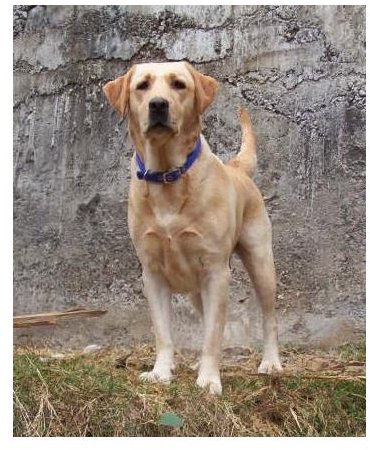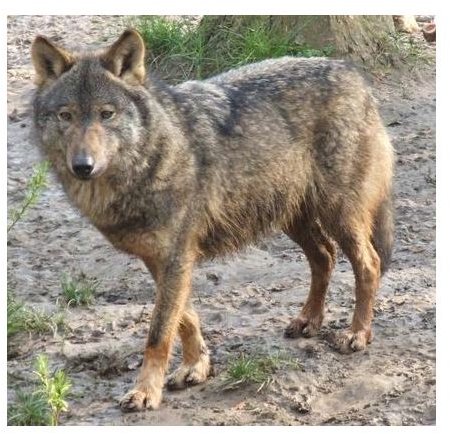The Genetic Evolution of Dogs
Tens of thousands of years ago, the domestication of wolves began in East Asia. Early humans and wolves shared similar habitats and hunted the same prey, prompting many confrontations as well as social interaction. The domestication of mammals creates a number of genetic changes stimulated by necessity and environment. It is believed by archeologists that the wolves provided humans with a source of food and fur, transportation and safety. This genetic evolution of dogs was further precipitated by the cross-breeding of different types of domesticated wolves.
Possible Reasons for Domestication

Some of the earliest adoptions of dogs by humans involved orphaned wolf cubs. Early humans who killed wolves to protect themselves often socialized with the surviving cubs. These cubs would grow and breed with other wolves, resulting in more domesticated animals.
As scavengers, wolves were attracted by left-over food and bones at human camp sites. As such, wolves would often follow the migration patterns of humans. Additional arguments for this theory come from Dr. Raymond Coppinger of Hampshire College in Massachusetts. He believes that the wolves with friendlier characteristics were allowed to interact more readily with humans. This resulted in more domesticated breeds.
Evidence to prove these theories exists in both ancient campsite finds as well as empirical evidence of modern culture. As beasts of burden, it is known that the huskies used by Inuit Native Americans are directly descended from wolves. In addition, the fact that many societies consume dogs shows that wolves most likely were used as a form of food. This also may have resulted in domestication, much like cows and horses.
DNA Evidence

Charles Vila has conducted the most extensive study to date, demonstrating that there is no legitimate evidence to show that any other form of canine was responsible for the modern dog except that of the wolf. Analyzing 162 different DNA samples from 27 different wolf populations around the world, Vila’s team compared the examples with those of 140 dogs from 67 breeds.
The evidence demonstrated that all dog breeds descended from different wolves in different areas at different times. For example, North American dog breeds descended from North American wolves, while Asian dog breeds descended from Asian wolves. This is the main reason that different types of dog breeds exist.
The major challenge and problem with the study of the evolution of dogs is the fact that the DNA evidence does not align to accepted principles of the molecular clock theory. The oldest clear fossils of dogs as distinguished from wolves date approximately 14,000 years ago. With the level of evolution that has occurred from the wolf to the modern dog, most scientists believe that the time frame would be around 100,000 years. This means that unlike other species on Earth, the dog evolved much faster than normally possible.
Evolutionary Changes in Dog Characteristics

Modern dog characteristics are the result of thousands of years of evolution. The most notable characteristics of dogs differing from wolves are the size of the animal, the change in coat markings and colors, shorter jaws and smaller teeth and the shrinking of the brain. Intelligence was also affected, most prominently in the fact that modern dogs do not possess the alert level and sensory processing ability of wolves. Scientists also point to the fact that only wolf cubs exhibit the behavior of tail wagging, while dogs perform the action throughout their lives.
Additional Resources
Genetic Mutations and the Speed of Evolution
Image Sources
Gray Wolf. (Image supplied by Gerard van Drunen at Wikimedia Commons; Creative Commons Attribution 2.0 License; https://upload.wikimedia.org/wikipedia/en/6/68/Canis_lupus_signatus_crop.jpg)
Labrador Retriever. (Image supplied by Mzelle Laure at Wikimedia Commons; GNU Free Documentation License; Creative Commons Attribution 2.5 License; https://upload.wikimedia.org/wikipedia/commons/a/ab/Wikilabrador_jardin.JPG)
Sheepdog. (Image supplied by Peter Shanks at Wikimedia Commons; Creative Commons Attribution 2.0 License; https://upload.wikimedia.org/wikipedia/commons/0/00/Backing_sheep_at_sheepdog_competition.jpg)
Clyde the Bulldog. (Image supplied by Michael Lazarev at Wikimedia Commons; Public Domain; https://upload.wikimedia.org/wikipedia/commons/1/13/Clyde_The_Bulldog.jpg)
This post is part of the series: Genetic Origins of Man and Man’s Best Friend: Dogs
Mankind developed over millions of years to the state in which it finds itself today. Tied to the origins of humans is the decline of the Neanderthal and the rise of the dog.
